|
|
|
|
[Index]
[Back] |
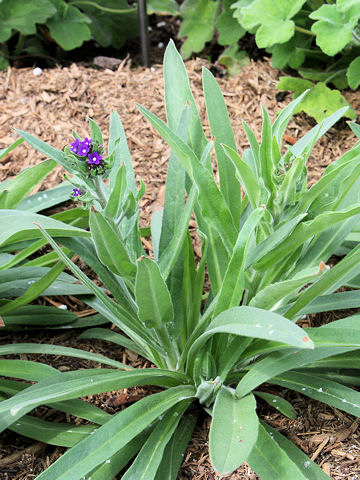 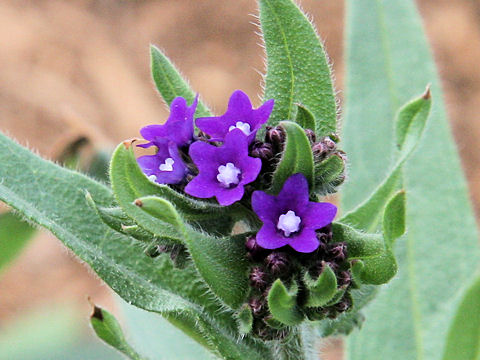 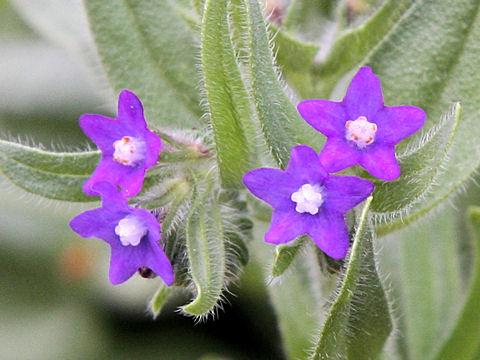 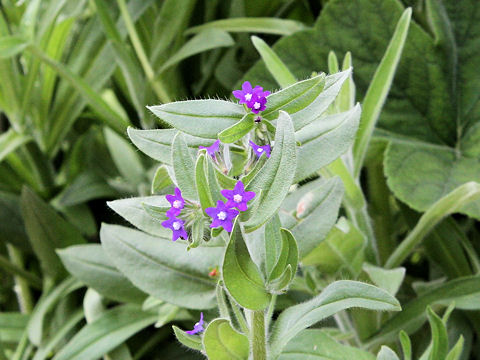 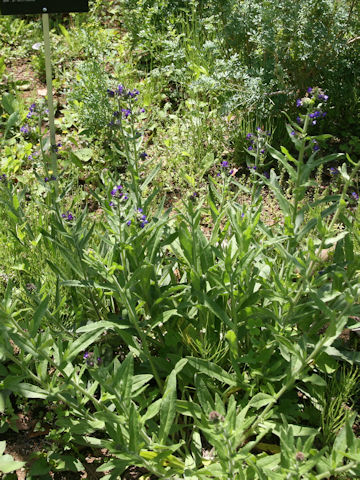 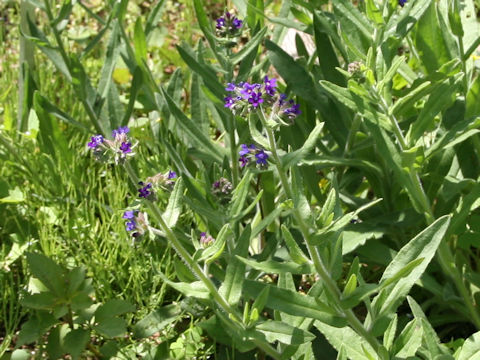 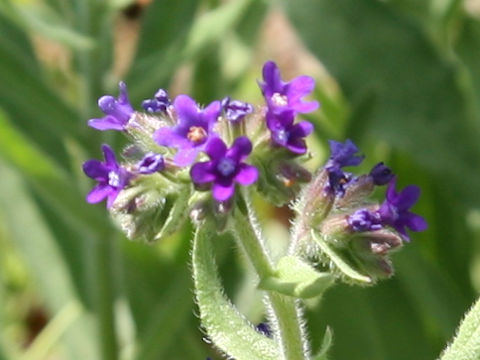 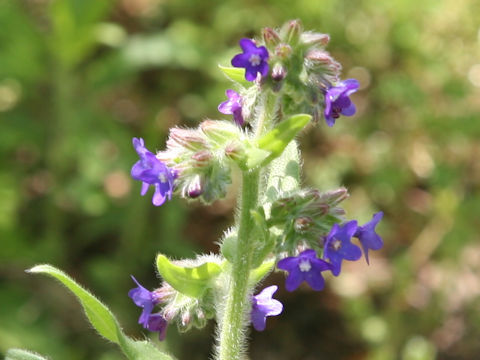 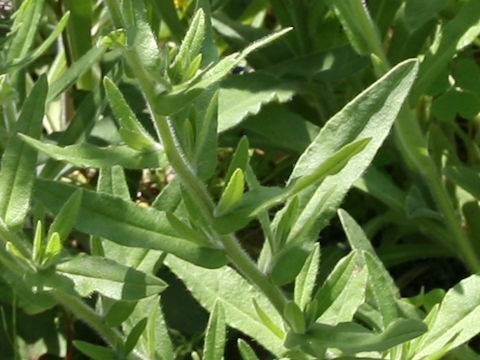 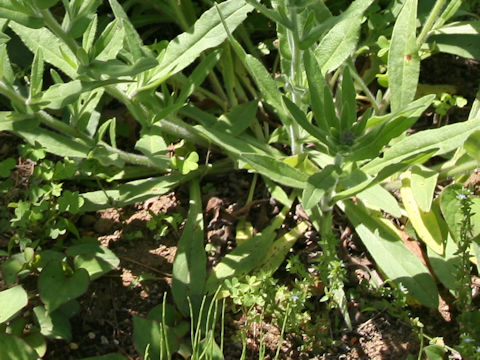 |
|
|
|
ヨーロッパからコーカサス地方が原産です。いまではカナダやアメリカ北部にも帰化しています。牧草地や荒地、道ばたなどに生え、高さは30〜80センチになります。葉は楕円形で互生し、全縁または波状縁で、葉柄には翼があります。茎葉は無柄で、茎を抱きます。葉や茎は、毛で被われています。6月から8月ごろ、茎頂にサソリ形集散花序をだし、はじめ赤色で、後に暗紫色になる花を咲かせます。花冠の先端は5裂します。果実は4分離果で、分果は楕円形をしています。かつては「コンフリー」と同様に、葉や若芽を食用にされましたが、現在では肝障害を起こす可能性があるため、食用とはされていません。 |
|
|
ムラサキ科ウシノシタグサ属の多年草で、学名は Anchusa officinalis (syn. Anchusa procera)。英名は Alkanet、Common bugloss。 |
|
|
The Alkanet (Anchusa officinalis) belongs to Boraginaceae (the Borage family). It is a biennial or a shot lived perennial herb that is native to Europe and the Caucasus. It has now become naturalized in Canada and the northern United States. It grows in meadows, wastelands, and along roadsides, and is 30-80 cm tall. The leaves are elliptic and alternate, with entire or wavy margins and wings on the petioles. The cauline leaves are sessile and enfold the stem. From June to August, scorpion-shaped cymes appear at the top of the stem, producing flowers that are initially red and later turn dark purple. The corolla has five lobes at the tip. The fruit is a four-separated schizocarp with the mericarp elliptic. In the past, the leaves and young shoots were edible, as was "comfrey", but today they are not considered edible because they can cause liver damage. |
|
|
[上・中1] 群馬県中之条町「薬王園」にて、2008年03月30日撮影。 [中2・中3] 同上にて、2009年04月26日撮影。 [中4〜8・下] 茨城県つくば市「つくば実験植物園」にて、2024年05月11日撮影。 |
|
|
|
Shu Suehiro |